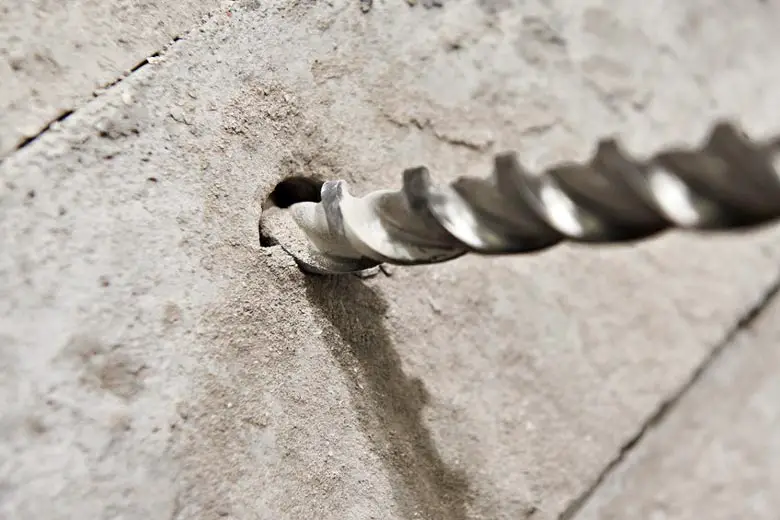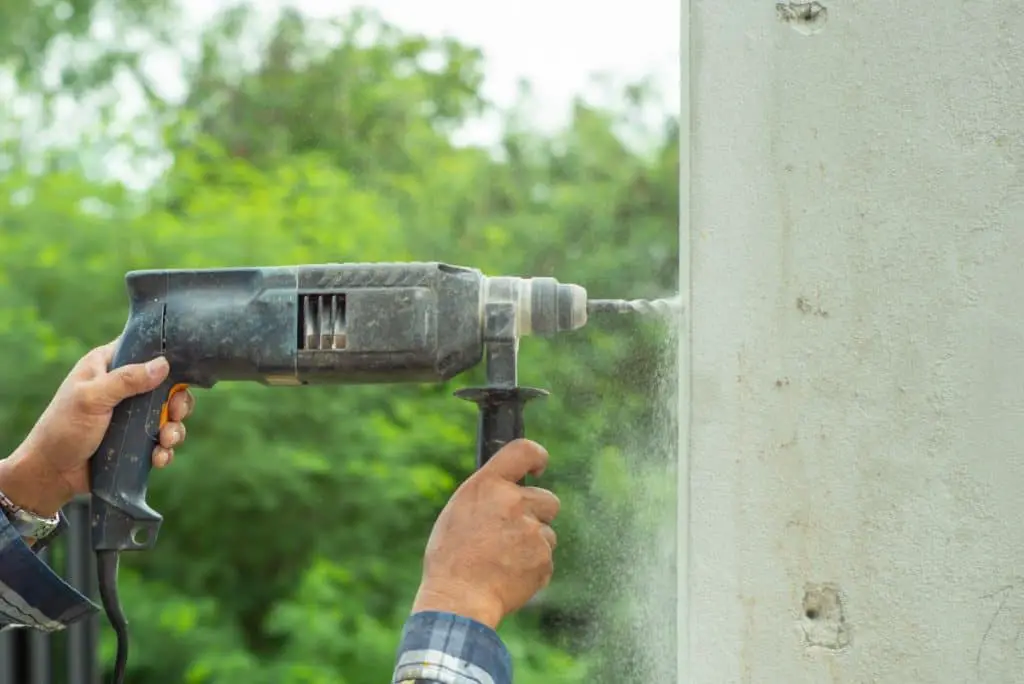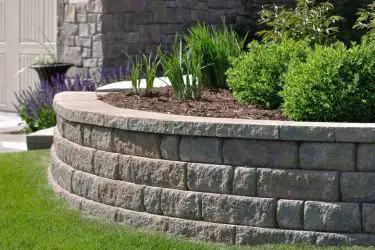Driving around any city, you’re likely to find major construction happening somewhere at any given time. Building from the ground up is one thing, but tearing down or renovating an existing structure is another. When dealing with any old property, one of the materials you’ll have to contend with is concrete.
Old concrete is harder to drill because, under the right circumstances, it gets stronger with age. As long as favorable temperatures and moisture are present to keep the cement hydrated, it will continue to strengthen. This process can take place over a span of weeks or even months.
Other factors contribute to older concrete being more difficult to drill. These factors have to do with the way in which concrete is created and installed. Though old concrete may be more difficult when it comes to any kind of demolition, there are always tips and tricks to make the process easier.

Table of Contents
What Makes Old Concrete Harder To Drill?
Old concrete is harder to drill due to several factors that arise during mixing and installing concrete. These include the ratio of concrete mixture, proper installation and the process of hydration.
As we know it today, concrete is a mixture of cement, sand, gravel, additives, and water. There is a proper procedure on how to mix, install and cure concrete for it to be strong and durable. It is during this process that we can uncover why older concrete is more difficult to drill than fresh concrete.
Related article: Is Old Concrete Stronger Than New Concrete?
Looking at each one of these steps will help you understand why old concrete is stronger and more durable than fresh concrete, as well as why the strength of old concrete differs across the board.
The Ratio of Concrete Mixture
Concrete is used for a variety of different purposes, and the mixture of the concrete is dependent on its purpose. For example, a concrete pipe has a low water to cement ratio, making it stronger than conventional concrete. That is the general principle; the lower the water-cement ratio, the stronger the concrete.
Water dilutes the mixture. Therefore, the more water you put in your concrete mixture, the weaker the overall mixture will be. That said, it isn’t always necessary to use a low water-cement ratio. For instance, concrete that is poured for residential footings can be weaker than the concrete used in areas like driveways, sidewalks, or outdoor patios.
Lack of Proper Installation
It’s no secret that concrete cracks as it hardens. This is because the concrete shrinks to 1/16th of an inch (0.15 cm) for every ten feet (3.048 m).
A concrete finisher should take this into consideration and prepare for this eventuality. One way to do this is to use contraction or crack control joints that allow the finisher to control where these cracks occur. Doing so ensures that the majority of the poured concrete is solid because that compression strengthens the concrete.
Excessive cracks and the depth of those cracks are points of vulnerability in the concrete, so regardless of age, if the concrete is not installed properly, then it will be weak.
The Process of Hydration
Water in the concrete causes hydration, a chemical reaction that strengthens the concrete during the curing process. If the concrete cures too quickly or the water evaporates too fast, then the concrete may not reach its full strength. Since the curing process is dependent on the optimal temperatures and moisture, hydration can take place over a few weeks or a few months.
There are various methods used to assist the curing process to ensure the concrete reaches its full strength. For example, liquid curing compounds can be added to the mixture to help retain the moisture needed for proper curing. You can also use plastic to cover the concrete and retain moisture during the curing process.
Again, if the concrete does not reach the end of the curing process, which typically takes 28 days, then regardless of its age, it will be weaker and may not hold up as well as newer concrete that was fully cured.
Does Drilling Through Old Concrete Require Special Equipment?
Because older concrete is often more brittle than modern concrete, you may need special equipment to drill through it. However, there are several things to keep in mind when drilling, especially if you want the new holes to withstand the weight of their contents.
Drilling through old concrete may require special drill bits or other tools. If your old concrete is particularly brittle, use a carbide-tipped masonry drill bit. If this isn’t available at your local hardware store, look for one with diamond edges instead of carbide.
To avoid unnecessary wear and tear on your new drill bit, adjust its speed appropriately before drilling into the wall. Drilling too slowly won’t remove enough material, and drilling too quickly allows the bit to heat up and potentially shatter.

Because older concrete may have settled over time, it’s best to drill at an angle (like 45 degrees) instead of straight down. This makes it easier for the bit to penetrate the wall.
Related article: Are Titanium Drill Bits Good for Concrete?
If you’re experiencing too much resistance while drilling, stop and cool your bit with water or compressed air before continuing. If this doesn’t solve the problem, consider switching to a masonry drill bit instead. When you are done, use a vacuum cleaner hose to remove dust created during the process.
How To Drill Through Old Concrete
Now that we know why old concrete can be harder to drill through, the next question is how to go about it. Concrete is tough on drills because it is dense, tough, and there are aggregate stones embedded throughout that can take a toll on your drill bit, dulling it fast. To drill through old concrete, take the following steps:
- The first thing you’re going to want to do is make sure you have the right tool. The best drill to get through concrete is a hammer drill while the best bits are masonry bits. The reason the hammer drill is the preferred tool to say a rotary drill is because it not only rotates while it drills, but it aso hammers.
- Create a drill point with a masonry nail set and hammer so you have a starting point. You only need to create a small indention on the concrete, then you can set up your drill and get started. Make sure the drill is at a slow to medium speed, and be sure to apply a firm but light amount of pressure. Let the drill do the work.
- If you encounter an obstruction of some kind, stop drilling. At this point, you would take the masonry nail, making sure the tip is touching the block, and lightly hammer until the obstruction gets broken up.
- Resume drilling. Maintain the speed and pressure throughout until you have reached the desired depth. After this, all that’s left is to clear the hole of any concrete dust with a brush and vacuum.
Conclusion
Overall, old concrete is stronger than fresh concrete because of the time factor. The concrete gets its strength because of the mixture. The stronger the cement in the mixture, the better the curing process. It’s a process that takes time, and the more time allowed for hydration, the stronger the finished product.
However, the strength of the concrete is also dependent on the location and the expertise of the concrete finishers installing the concrete. So, while old concrete is always going to be stronger than fresh concrete, the strength of old concrete will differ.



